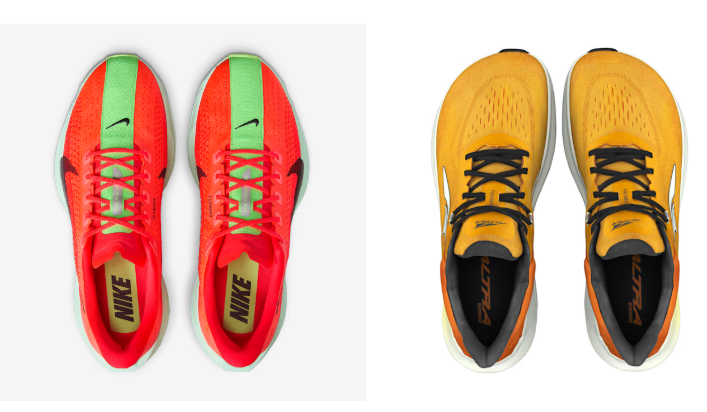A Podiatrist’s Guide: Traditional vs. Anatomic Shoes

Your shoes, more than just aesthetics, play a bigger role in your foot health. The right pair can help you move comfortably or prevent injury. The effects of wearing worn out shoes or the wrong pair, on the other hand, can create bigger problems, chronic pain, hammertoes or bunions.
In this guide, we’ll compare two categories of footwear—traditional shoes and anatomic shoes—so you can make an informed decision about what’s best for your feet. Please remember that consulting a podiatrist gives you personalized advice.
What Are Traditional Shoes?
When most people think of athletic or lifestyle shoes, they’re picturing popular brands like Nike, Asics, Brooks, or Adidas. They’re designed with comfort, cushioning, and performance in mind, and for many people, they feel natural because they’ve worn this style their whole lives.
Common characteristics of traditional shoes include:
Narrow toe box – The front of the shoe tapers inward, which creates a sleek look and a snug fit. While this can feel supportive for some activities, it also limits toe movement.
Elevated heel (heel-to-toe drop) – Most traditional running or training shoes feature an 8–12mm drop, meaning the heel sits slightly higher than the forefoot. This design can reduce strain on the Achilles tendon and calf during activity, but it also shifts body weight forward.
Cushioning and structured support – Thick midsoles and built-in arch support help absorb shock and may be helpful for people needing extra stability or comfort.
Performance-oriented design – Traditional shoes are often engineered for speed, stability, and versatility, making them a go-to option for many athletes and casual wearers alike.
What Are Anatomic Shoes?
Anatomic shoes are designed to match the natural shape and function of the human foot. Instead of forcing your feet to adapt to the shoe, these shoes let your feet move as they were meant to.
Key features include:
- Wide toe box – Gives generous space to spread out toes.
- Low or zero heel-to-toe drop – Keeps your foot level with the ground, supporting natural gait and posture.
- Foot-shaped design – Mimics the natural anatomy of the foot for better alignment and balance.
Where to buy anatomic shoes? Trusted anatomic shoe brands include Topo Athletic, Altra, Lems, and others. These shoes help promote natural movement, reduce strain on the joints, and can even help prevent deformities caused by years of traditional shoe wear.
Side-by-Side Comparison: Nike vs. Altra

| Feature | Nike (Traditional Shoe) | Altra (Anatomic Shoe) |
|---|---|---|
| Toe Box | Traditional narrow, tapered fit | Wide, roomy toe box design |
| Heel-to-Toe Drop | Usually has elevated heel (9.5mm for this specific pair) | Zero drop (level footbed) |
| Cushioning | Responsive cushion | Responsive support and comfortable cushion |
| Movement Style | Performance-focused; This specific shoe sample is engineered for running. | Promotes good foot health. This specific kind of shoe is for road running and walking. |
Based on your individual needs, either traditional or anatomic shoes may provide the comfort and support that’s right for you.
Get a Personalized Advice
If you want to learn more about different kinds of shoes for your foot type or lifestyle, download our Shoe Buying Guide today. To get personalized shoe recommendations based on your shoe size or foot conditions, please visit a podiatrist near you.
At Central Massachusetts Podiatry, our team of highly skilled podiatrists and foot & ankle surgeons can guide you in finding the right footwear for your needs. Whether you’ll need anatomic shoes, orthotic sole inserts, or other types of shoes to suit your needs. Schedule an appointment today.
Related Blogs

Transitioning from Conventional Shoes to Minimalist Shoes: A Comprehensive Guide for Optimal Foot Health
At Central Massachusetts Podiatry, we understand that transitioning…

The shoe that can make you run faster!
I get lots of funny comments from my patients that get me…

The Damage & Pain Old or Bad Shoes Can Cause
Old Shoes - Old or worn out shoes are one of the most common…








